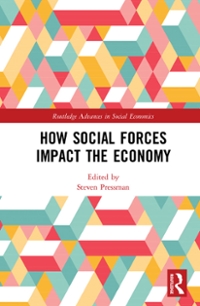1
Consider some determinants of the price elasticity of demand: . The availability of close substitutes . Whether the good is a necessity or a luxury . How broadly you define the market . The time horizon being considered A good with many close substitutes is likely to have relatively demand, since consumers can easily choose to purchase one of the close substitutes if the price of the good rises. A good's price elasticity of demand depends in part on how necessary it is relative to other goods. If the following goods are priced approximately the same, which one has the most elastic demand? O A tractor for farmers O Yacht The price elasticity of demand for a good also depends on how you define the good.The price elasticity of demand for a good also depends on how you define the good. Organize the goods found in the following table by indicating which is likely to have the most elastic demand, which is likely to have the least elastic demand, and which will have demand that falls in between. Categories Most Elastic In Between Least Elastic Red bell peppers O O O Food O O O Vegetables O O O The price elasticity of demand is also affected by the given time horizon. Compared to the short-run demand for oil, the demand for oil in the long run will tend to be elastic.Consider the market for soybeans. The following graph shows the weekly demand for soybeans and the weekly supply of soybeans. Suppose new farming technology is developed that enables growers to produce more crops with the same resources. Show the effect this shock has on the market for soybeans by shifting the demand curve, supply curve, or both. Note: Select and drag one or both of the curves to the desired position. Curves will snap into position, so if you try to move a curve and it snaps back to its original position, just drag it a little farther. 30 O Demand 24 Supply O 18 Supply PRICE (Dollars per bushel) 12 Demand 6 0 10 20 30 40 50 QUANTITY (Millions of bushels)One of the growers is excited by this advancement because now she can sell more crops, which she believes will increase revenue in this market. As an economics student, you can use elasticities to determine whether this change in price will lead to an increase or decrease in total revenue in this market. Using the midpoint method, the price elasticity of demand for soybeans between the prices of $15 and $9 per bushel is , which means demand is between these two points. Therefore, you would tell the grower that her claim is because total revenue will as a result of the technological advancement. Confirm your previous conclusion by calculating total revenue in the soybean market before and after the technological advancement. Enter these values in the following table. Before Technological Advancement After Technological Advancement Total Revenue (Millions of Dollars)The following graph displays four supply curves (HH, II, ]], and KK) that intersect at point A. (?) 200 T 180 K 160 140 120 A 100 H PRICE (Dollars per unit) H 80 40 K 20 20 40 60 80 100 120 140 160 180 200 QUANTITY (Units)Using the graph, complete the table that follows by indicating whether each statement is true or false. Statement True False Curve JJ is more elastic between points A and D than curve KK is between points A and C. O O Between points A and E, curve HH is unit elastic. O O Between points A and D, curve JJ is elastic. O O












